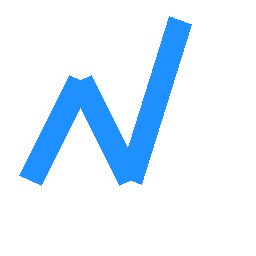How to Use Budgeting Apps Effectively
Managing your finances can feel overwhelming, especially with so many expenses to track. Luckily, budgeting apps make it easier to monitor your money, set financial goals, and stay on top of your spending. But simply downloading an app isn’t enough; knowing how to use these tools effectively is key to achieving financial success. Here’s a straightforward guide on how to get the most out of budgeting apps, tailored for an American audience.
Choose the Right Budgeting App for You
The first step is selecting an app that suits your needs. Popular options like Mint, YNAB (You Need A Budget), and EveryDollar offer unique features. Mint provides a comprehensive view by connecting to your bank accounts and Credit Cards, giving you real-time updates. YNAB emphasizes proactive planning and goal-setting, ideal for those who want to manage debt or save for major expenses. Research each app’s features, interface, and cost to find the best fit.
Set Clear Financial Goals
Effective budgeting begins with clearly defined goals. Whether you want to pay off student loans, save for a house, or build an emergency fund, your app should help you outline and track these objectives. Enter your goals into the app and assign specific amounts and timelines. This clarity keeps you motivated and focused, turning abstract saving into tangible progress.
Categorize Your Expenses
Once your goals are set, categorize your expenses accurately. Common categories include housing, groceries, transportation, entertainment, and savings. Many budgeting apps automatically categorize transactions, but it’s important to review and adjust these as needed. Proper categorization helps you identify spending patterns and areas where you can cut back.
Track Expenses Regularly
Consistency is essential for effective budgeting. Make it a habit to log expenses daily or weekly. Link your accounts to automate data entry, which saves time and reduces errors. Regular tracking allows you to see how your spending aligns with your budget, and prompts you to make adjustments before overspending occurs.
Review and Adjust Your Budget Monthly
Your financial situation isn’t static. Income, expenses, and goals evolve over time. Schedule a monthly review to analyze your spending, identify areas of overspending, and adjust your budget accordingly. Many apps generate reports and insights, making it easier to see your progress and stay motivated.
Use Notifications and Alerts Wisely
Most budgeting apps offer notifications for bill due dates, overspending, or reaching savings milestones. Enable these alerts to stay proactive. For example, if you’re close to exceeding your grocery budget, an alert can prompt you to cut back or find cheaper alternatives.
Leverage Additional Features
Many apps include features like debt payoff plans, investment tracking, or financial advice. Take advantage of these tools to enhance your Financial Literacy and planning. For instance, YNAB offers educational resources that can help beginners understand money management principles.
Stay Committed and Patient
Building financial discipline takes time. Use your budgeting app as a supportive tool rather than a restrictive one. Celebrate milestones, like paying off a credit card or reaching a savings target. Stay patient and persistent—financial stability is a journey, not a sprint.
Final Thoughts
Using budgeting apps effectively empowers you to take control of your finances. By choosing the right app, setting clear goals, tracking expenses diligently, and reviewing your progress regularly, you can build better money habits and work towards your financial dreams. Remember, the key lies in consistent use and making informed adjustments along the way.
Start today, and watch how your financial confidence grows!

Leave a Reply